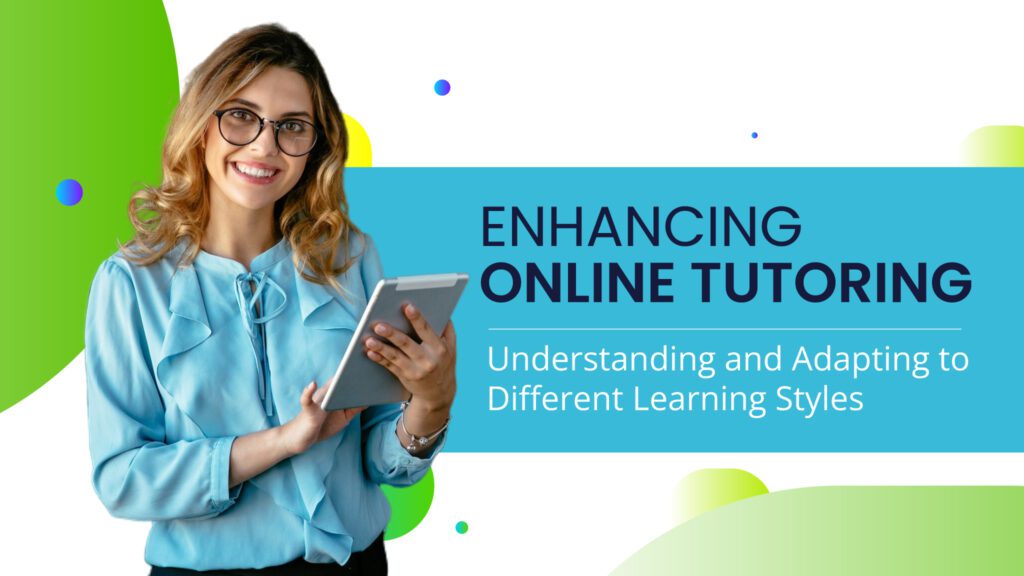
As online educators, we understand that each student is unique, with their own preferred methods of learning and processing information.
By recognizing and accommodating these diverse learning styles, we can elevate the quality of our online tutoring sessions and ensure that every student reaches their full potential.
Why Learning Styles Matter in Online Tutoring
In the virtual classroom, where face-to-face interactions are limited, understanding students’ learning styles takes on even greater significance. It serves as the foundation upon which we build our teaching strategies, enabling us to tailor our approach to meet the individual needs of each student. By catering to their preferred modes of learning, we can enhance engagement, boost comprehension, and foster a supportive learning environment conducive to success.
Identifying Different Learning Styles
- Visual Learners
These students thrive on visual stimuli, preferring to learn through images, diagrams, and videos. They benefit from visual aids that help them visualize concepts and processes.
- Auditory Learners
Auditory learners absorb information best through listening and verbal communication. They excel in discussions, lectures, and audio-based learning activities.
- Kinaesthetic Learners
Kinaesthetic learners learn by doing and experiencing. They prefer hands-on activities, interactive simulations, and physical engagement with the material.
- Reading/Writing Learners
These learners prefer to learn through reading and writing activities. They excel in tasks that involve reading texts, taking notes, and writing summaries.
Adapting Teaching Strategies for Online Tutoring
Now that we’ve identified the main learning styles, let’s explore how online tutors can adapt their teaching strategies to accommodate each type of learner in virtual settings:
- Visual Learners
Incorporate visually rich materials into your online tutoring sessions, such as slideshows, infographics, and educational videos.
Utilize screen sharing features to enhance visual presentations and facilitate interactive discussions.
- Auditory Learners
Emphasize verbal communication and auditory learning activities in your online tutoring sessions.
Use video conferencing tools for live discussions, audio recordings for lectures, and podcasts for supplemental learning resources.
- Kinaesthetic Learners
Engage kinaesthetic learners through interactive online activities and virtual labs.
Utilize interactive whiteboards, online simulations, and virtual manipulatives to provide hands-on learning experiences in a digital environment.
- Reading/Writing Learners
Provide written materials and reading assignments to support reading/writing learners in their online tutoring sessions.
Encourage note – taking, writing exercises, and written reflections to reinforce learning objectives.
#OnlineTeaching #Wayvida #OnlineTeaching #DistanceLearning #RemoteEducation #VirtualClassroom #Elearning #EdTech #DigitalLearning #OnlineLearning #RemoteTeaching #VirtualLearning #RemoteClassroom #OnlineEducation #TeachOnline #DigitalClassroom #RemoteSchooling #OnlineInstructor #VirtualTeaching #DistanceEd #OnlineLesson #EdChat #wayvida #wayvidaonlineteaching #wayvidaonlinecourse #wayvidacourseselling #wayvidalms #wayvidaedtech #topedtechplatform #toplmsplatform #topedtechtools #drgireeshneyyar #gireeshneyyar
